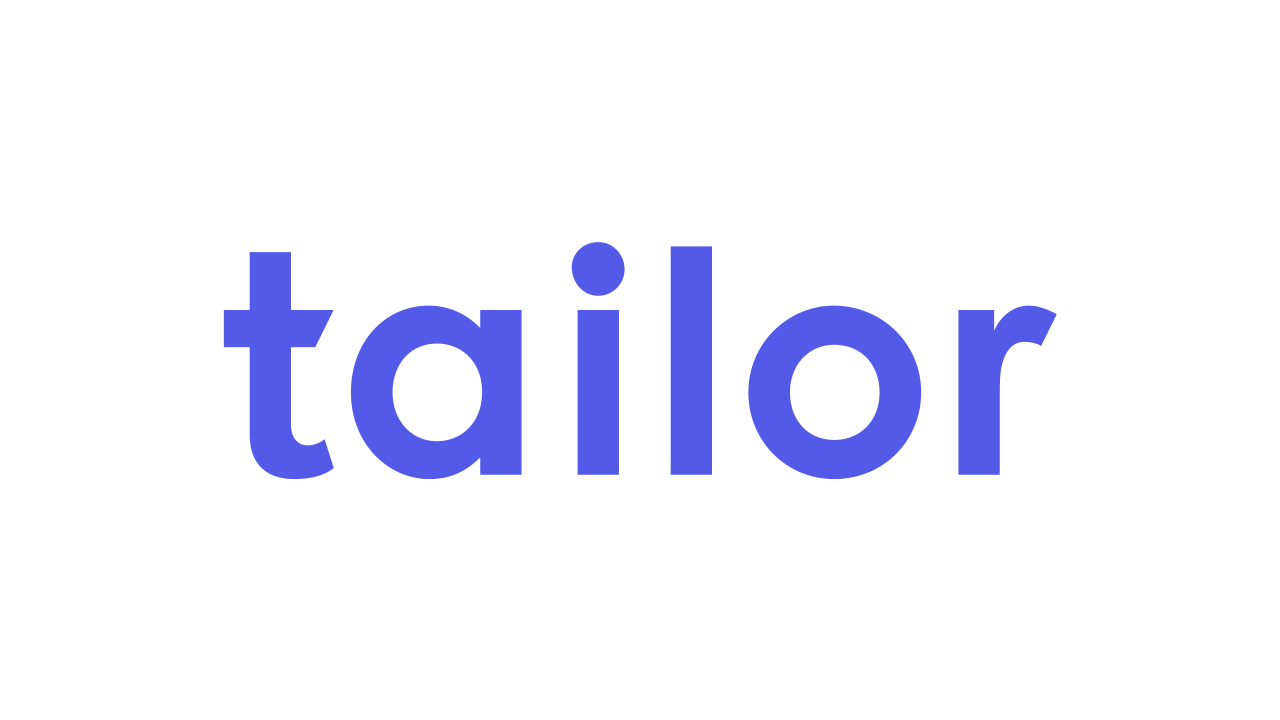Building SaaS with Low-code: Transforming business application with Headless Approach
Thinking about building a software tool or starting a SaaS project? Concerned about the costs and complexity? You've come to the right place.
Hi, I'm Nao, a software developer with over 10 years of experience. In this article, I'll introduce you to the world of low-code and headless technology. These innovative approaches can make your project simpler and more affordable.
You don't need to be a coding expert to create great software, and you don't have to spend a fortune to make it happen. Keep reading to discover how you can save both time and money on your next project.
Table of Contents
- Introduction to SaaS and the No-code Movement
- Can I Build Actual SaaS with No-code/Low-code Tools?
- No-code vs Low-code: A Comparative Analysis
- Why You Should Use Tailor to Build SaaS Products in Low-code
- “Headless” in SaaS: A Paradigm of Power and Flexibility
- The Future of SaaS: Low-code and Headless
- On the Shoulders of Giants: AI
- Get Started with Tailor
1. Introduction to SaaS and the No-code Movement
What is SaaS? An Overview
Software as a Service (SaaS) has revolutionized the way businesses and individuals interact with applications. SaaS products are hosted on the cloud and can be accessed from any device with an internet connection. This model allows for seamless integrations with other platforms and offers features like data encryption and user authentication.
SaaS applications are often available on multiple platforms, including the mobile app. They can include everything from comprehensive dashboards and landing pages to client portals and live chat services. With SaaS, you can build an entire website or mobile applications without the need for extensive technical skills.
One of the real values of SaaS is its pay-as-you-go model, allowing businesses to scale according to their needs. Pre-built regulatory features and offline functionality are often included, making SaaS a no-brainer for many organizations.
The Rise of No-code/Low-code Development
The no-code and low-code movement is a response to the market needs for faster and more accessible software development. These platforms enable individuals to build SaaS without coding, making the creation of a SaaS product or app more accessible to those without coding skills.
The rise of no-code and low-code platforms has made software development more accessible than ever. From drag and drop features to seamless integrations with tools like Google AdWords, these platforms enable anyone to build a no-code or low-code SaaS product.
They have opened doors for entrepreneurs, students, and professionals to create applications that meet their target market's needs, step by step, without the need for extensive coding. Discussion forums, student feedback, and comprehensive support systems further enhance the learning and development process.
In summary, the no-code/low-code movement, coupled with the SaaS model, has created a new era in software development. It's an exciting time where anyone, regardless of their technical background, can contribute to successful SaaS products and applications. Whether you're looking to build websites, mobile applications, or a full-fledged SaaS app, the tools are now at your fingertips.

2. Can I Build Actual SaaS with No-code/Low-code Tools?
The short answer is yes. The no-code movement has made it possible to build most of the SaaS products without coding. Various no-code platforms offer a full-stack development platform that allows anyone to create applications, even without coding skills. Here are some real-world examples:
Mobile Applications
With no-code app builders, entrepreneurs have launched successful mobile applications on the Google Play Store and the iOS App Store. These tools provide a drag and drop interface, enabling users to design the user interface and add basic features without writing a single line of code.
Internal Tools and Client Portals
Businesses have utilized no-code tools to create internal tools and client portals. These platforms offer pre-built regulatory features, data encryption, and user authentication, ensuring a secure and efficient solution.
Comprehensive Dashboards
No-code platforms have enabled the creation of comprehensive dashboards that integrate with third-party API integrations. These dashboards provide real value to businesses by offering seamless integrations and live chat services.
The no-code movement is revolutionizing the way we build SaaS products, making it accessible to anyone, regardless of coding skills. From mobile applications to internal tools and comprehensive dashboards, no-code platforms offer a full-stack development solution. Utilizing a drag and drop interface, these platforms enable the creation of secure and efficient applications without writing a single line of code.
This democratization of software development is not just a trend but a significant shift, opening doors for innovation and making software creation achievable for a broader audience.

3. No-code vs Low-code: A Comparative Analysis
No-code platforms make it easy for users to build apps without any coding knowledge, using a simple visual interface with drag-and-drop capabilities. These platforms are perfect for putting together a basic minimum viable product (MVP) and are often seen as the go-to tools for those lacking technical or coding skills and abilities.
On the other hand, when it comes to more complex requirements and full functionality, low-code platforms take the lead. They offer more code tools and a broader dashboard that accommodates custom code and connections to third-party APIs. With low-code platforms, users can create a wide range of products, including mobile apps, SaaS offerings, client portals, internal tools, and even comprehensive websites with offline capabilities.
In short, while no-code platforms are suitable for prototypes and basic projects, they fall short for production use, especially in the enterprise environment. Low-code platforms are the preferred choice for more intricate and demanding enterprise needs.
They provide the flexibility and robustness required to meet the challenges of modern business applications. The following section will delve into a more detailed comparison of both approaches, shedding light on their respective strengths and limitations.

No-code Platforms
Ideal for a no-code journey, these tools allow users to automate tasks, create applications, and build websites without coding. They offer pre-built regulatory features, user authentication, and data encryption.
Low-code Platforms
These platforms offer more than a no-code tool. They are a full-stack development platform, allowing for seamless integrations. With low-code tools, you have platform and can build a SaaS product with more complex features.

Comparison Factors:
-
Flexibility and Customization: Low-code platforms provide more flexibility in design and functionality. While no-code platforms are limited to predefined templates and functions, low-code platforms allow developers to write custom code, enabling more tailored solutions.
-
Scalability: As businesses grow, their technological needs evolve. Low-code platforms are designed to scale with the business, accommodating more complex workflows and larger user bases. No-code platforms may struggle to handle these increased demands.
-
Integration Capabilities: Low-code platforms often come with extensive integration options, allowing businesses to connect with various third-party services and legacy systems. This is essential for many enterprises that rely on different tools and systems, something that no-code platforms may not fully support.
-
Performance Optimization: Low-code platforms allow for performance tuning and optimization, ensuring that the applications run smoothly and efficiently. This is particularly important for applications with high user traffic or complex computations, areas where no-code platforms may fall short.
-
Collaboration and Team Development: Low-code platforms often include features that facilitate collaboration among development teams. This includes version control, shared repositories, and other tools that make it easier for multiple developers to work on a project simultaneously. No-code platforms may lack these collaborative features.
-
Long-term Maintenance and Support: Low-code platforms often come with robust support and maintenance options, ensuring that applications continue to function properly as technology evolves. This includes updates, bug fixes, and ongoing support from the platform provider, which may not be as comprehensive in no-code platforms.
-
Cost-Effectiveness: While no-code platforms may seem more affordable initially, the limitations in customization and scalability may lead to higher costs in the long run. Low-code platforms, with their ability to adapt to changing business needs, often prove to be a more cost-effective solution over time.
-
Security and Compliance: Building on the initial point, low-code platforms often provide more advanced security features and compliance tools. This includes more granular access controls, audit trails, and adherence to specific industry regulations, which may not be as thoroughly addressed in no-code platforms.
Based on the above comparison, low-code platforms are particularly advantageous for enterprise SaaS development due to their inherent flexibility and customization capabilities. Unlike no-code platforms, which are best suited for basic projects, low-code platforms enable developers to create complex and tailored solutions that can meet specific and complex business requirements.
In summary, low-code platforms offer a robust, flexible, and scalable solution for enterprise SaaS development, providing the tools necessary to create complex applications that can meet the intricate and demanding needs of modern businesses. Their superiority over no-code platforms lies in their ability to balance ease-of-use with the power and flexibility required for serious development, making them the preferred choice for enterprise-level projects.

4. Why You Should Use Tailor to Build SaaS Products in Low-code
Then, what are the best easy-to-use tools to build SaaS with low-code? Tailor is one of the best at this. Tailor's approach is reshaping how enterprises build and manage their business tools.

Innovative Approach to SaaS application Generation
Tailor's low-code SaaS generator is designed to empower enterprises to construct their own SaaS systems effortlessly. By using low-code and focusing on an API-first approach, Tailor has created a platform that offers commonly used functions in business systems through APIs. This allows for the flexible combination of necessary components, ensuring that businesses can craft their SaaS systems to their exact specifications.
Automatic API Endpoints Creation
By specifying the data schema as the setting, Tailor creates API endpoints automatically for CRUD (Create, Read, Update, Delete) operations for each data schema. This means you can control data simply by calling the API, streamlining the development process.
Easy Schema Modification
Tailor makes it quite easy to change the schema. All data schema relations are shown as the setting file, making it understandable and easy to control. This flexibility ensures that businesses can adapt their SaaS applications to evolving needs without unnecessary complexity.
Advanced Business Logic Implementation
Tailor platform provides three innovative ways to implement business logic, allowing developers to with no-code tools build almost any business software quickly:
-
Chained Queries: Most business logic can be implemented as a series of reads and writes to the database. Tailor allows developers to define such procedures and expose them as new GraphQL APIs, enhancing the software's functionality.
-
Event Triggers: Tailor platform can capture events such as API endpoint calls or changes in the upstream database and trigger a custom script to execute within the platform. Scheduled events (like cron jobs) can also be set, providing seamless integrations with third party tools.
-
State Machine: Managing the state of a record is a common use case for business logic. Tailor provides a schema-defined state machine with record-level authorization management and a GraphQL API to interact with the state, whether it's an approval workflow or an automated business process.

Mission-Driven Philosophy
Tailor's mission, "Empower every company to deploy any ideas" is more than a slogan; it's a guiding principle. By providing the "Tailor platform" Tailor supports anyone involved in business activities to easily build applications, from landing pages to entire websites, without coding.
At the same time, Tailor aims to create a world where engineers can focus on solving new problems rather than reinventing the wheel, offering real value in terms of functionality and innovation.
Tailor's pioneering approach to low-code SaaS generation is more than a trend; it's a paradigm shift that offers tangible benefits to businesses looking to innovate and adapt. With features like drag and drop interface, integration with conversational interfaces, and a pay-as-you-go model, Tailor platform is accessible, flexible, and powerful.
Whether it's building a no-code SaaS product with basic features or a complex system requiring offline functionality and third-party API integrations, Tailor platform provides the tools and support needed to succeed in today's digital landscape.
The other important point of Tailor is that it's a headless product. We don't have a traditional UI in our product. Why did we decide to go this route? Let's explore.

5. “Headless” in SaaS: A Paradigm of Power and Flexibility
The concept of “Headless” is not merely a technical term; it’s a canvas of limitless potential that represents a significant shift in the way software, especially SaaS applications, are developed and deployed. By decoupling front-end user interfaces from back-end processes, headless architecture paves the way for infinite customization, facilitates smooth integrations, and crafts a truly versatile experience. Here's why the headless approach is gaining traction:
Infinite Customization
Headless architecture allows developers to manipulate visual elements without constraints, enabling them to create mobile applications that precisely meet market needs.
Unlike traditional methods, headless platforms allow for custom code, providing the flexibility to tailor every aspect of the software as a service, from landing pages to client portals.
Seamless Integrations
Headless platforms enable seamless integrations with various third-party tools, such as Google Sheets, Google AdWords, and more, enhancing the software's functionality.
Enhanced User Experience
By separating the user interface from the back-end, headless platforms enable developers to create a more responsive and intuitive user experience, catering to different devices and platforms.
Many headless platforms offer a drag and drop interface, simplifying the development process without sacrificing the ability to create complex features.
Integration with Conversational Interfaces
Due to its headless capabilities, the interface can easily be integrated into ChatGPT and other conversational interfaces, complementing traditional “point-and-click” user interfaces (GUI).
Cost-Effectiveness
Many headless platforms operate on a pay-as-you-go model, making them accessible to businesses of all sizes, from startups building a minimum viable product (MVP) to established enterprises scaling their SaaS products.
The headless approach is more than a trend; it's a paradigm shift that offers real value to businesses looking to innovate and adapt in a rapidly changing digital landscape. Whether it's building websites without coding, automating tasks with no-code tools, or creating a full-fledged SaaS app with low-code platforms, the headless architecture provides the flexibility, power, and efficiency needed to succeed.
It's a no-brainer choice for those looking to leverage the latest technological advancements. With platforms like Tailor embracing the headless approach of no-code development, the future of software development looks more promising and accessible than ever before.

6. The Future of SaaS: Low-code and Headless
The SaaS landscape is undergoing a significant transformation. Traditional SaaS systems, often cumbersome and rigid, are giving way to more flexible and adaptable solutions. At the heart of this change is the shift towards low-code and headless development.
With a headless low-code SaaS platform, businesses can manage their SaaS data schema through a low-code platform, without getting bogged down by UI constraints. This approach offers unparalleled flexibility, allowing companies to tailor their SaaS systems to their unique needs. The emphasis is on functionality and adaptability, ensuring that the SaaS system can evolve with the business.
Why is This Approach the Future?
-
Build SaaS Without Coding: The no-code journey has been a revelation for many businesses. With platforms, companies can create applications, automate tasks, and even build entire websites without writing a single line of code. The visual interface, often featuring drag and drop capabilities, makes it a no-brainer even for those without technical skills.
-
Flexibility and Customization: Low-code platforms offer more than just a no-code tool. They are a full-stack development platform, allowing for seamless integrations. Whether it's integrating third-party API or adding custom code, the possibilities are endless.
-
Cost-Effective Solutions: Many of these platforms operate on a pay-as-you-go model, making them accessible to a wide target market. Whether you're a startup looking to launch a minimum viable product or an established enterprise aiming to scale, there's a solution for you.
7. On the Shoulders of Giants: AI
Artificial Intelligence (AI) is no longer a futuristic concept; it's a present-day reality that's reshaping the way businesses operate, especially in the realm of software development and SaaS products. Platforms like Tailor are leveraging AI to enhance their low-code tools, making the process of building SaaS without coding more intelligent, efficient, and accessible. Here's how AI is making a significant impact:

Intelligent Automation
-
Automate Tasks: AI enables platforms like Tailor to automate tasks that were previously manual, reducing the time and effort required to build SaaS applications.
-
Machine Learning: By incorporating machine learning algorithms, Tailor can provide insights and recommendations, helping developers create applications that meet market needs more effectively.
Integration with Conversational Interfaces
Tailor ERP Generator ChatGPT Plugin: Tailor's integration with the “Tailor ERP Generator” ChatGPT Plugin is a prime example of how AI can make software development more accessible. This plugin allows users to interact with Tailor platform through conversational interfaces like ChatGPT, simplifying the development process.
AI is not just a technological advancement; it's a paradigm shift that offers real value to businesses looking to innovate and adapt in a rapidly changing digital landscape. With platforms like Tailor embracing AI, the future of software development, especially in the realm of no-code and low-code platforms, looks more promising and accessible than ever before.
Whether it's automating tasks, enhancing user experience, or providing intelligent insights, AI is a giant upon whose shoulders modern software development stands. It's a testament to the innovation, adaptability, and efficiency that modern businesses demand, making the journey from a single line of code to a successful SaaS product more streamlined and intelligent than ever before.
8. Get Started with Tailor
Full Tailor platform is currently open for the limited users. You can contact us through Tailor's website and get a demo to get started.
Conclusion
The world of software development is undergoing a profound transformation, driven by the rise of no-code, low-code, and headless technologies. These innovations are democratizing the field, making it accessible to a broader audience, and enabling more flexible, customized, and cost-effective solutions.
Tailor, as a pioneer in headless low-code SaaS generation, stands at the forefront of this revolution, offering a platform that empowers businesses to build and manage their applications with ease and efficiency.
The integration of AI into platforms like Tailor adds another layer of intelligence and automation, further simplifying the development process and enhancing the capabilities of the resulting applications. From startups looking to launch a minimum viable product to established enterprises aiming to scale, the tools and technologies are now available to make the journey smoother and more successful.
In conclusion, the future of SaaS is bright, and it's being shaped by the innovative approaches of headless, low-code, and AI-driven platforms. Whether you're an experienced developer or a business professional with no coding background, the tools are at your fingertips to create, innovate, and thrive in the digital age.
Tailor platform, with its user-friendly interface, advanced features, and commitment to empowering businesses, is a prime example of how technology is not just evolving but revolutionizing the way we think about and engage with software development. It's a new wave, and it's transforming the SaaS landscape for the better.













